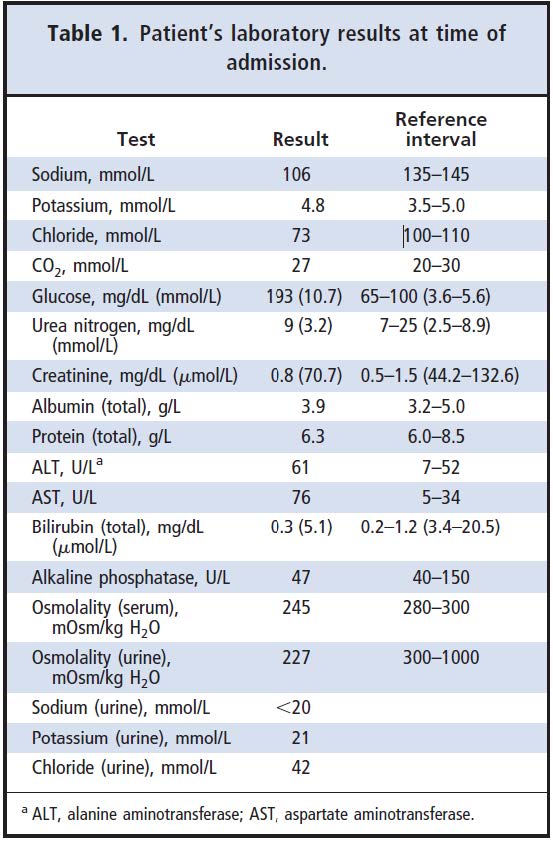Summary
DOI: 10.1373/clinchem.2012.194969
A 63-year-old white man with a history of schizophrenia plus polysubstance and alcohol abuse was seen by his primary care physician during a routine visit, at which time he was found to have a serum sodium concentration of 113 mmol/L.
Student Discussion
Student Discussion Document (pdf)
Gifford Lum1*
1VA Boston Healthcare System, Boston, MA 02132.
*VA Boston Healthcare System, 1400 VFW Pkwy., Boston, MA 02132. Fax: 857-203-5623;
E-mail: [email protected].
Case Description
A 63-year-old white man with a history of schizophrenia plus polysubstance and alcohol abuse was seen by his primary care physician during a routine visit, at which time he was found to have a serum sodium concentration of 113 mmol/L. The patient was contacted
by phone and advised to return to Urgent Care for assessment, but he did not respond until 7 days later, at which time his serum sodium concentration was 106 mmol/L. He reported that he felt fine the day before but that he started feeling very lethargic that morning and had trouble “keeping his eyes open.” The patient was noted to be somnolent and confused. Table 1 summarizes the patient’s laboratory data on admission.

Questions to Consider
- What are the causes of severe hyponatremia?
- How much water needs to be consumed before hyponatremia can occur in a patient with a
normal diet?
- In correcting severe hyponatremia, why must serum sodium be monitored closely?
Final Publication and Comments
The final published version with discussion and comments from the experts appears
in the June 2013 issue of Clinical Chemistry, approximately 3-4 weeks after the Student Discussion is posted.
Educational Centers
If you are associated with an educational center and would like to receive the cases and
questions 3-4 weeks in advance of publication, please email [email protected].
AACC is pleased to allow free reproduction and distribution of this Clinical Case
Study for personal or classroom discussion use. When photocopying, please make sure
the DOI and copyright notice appear on each copy.
DOI: 10.1373/clinchem.2012.194969
Copyright © 2013 American Association for Clinical Chemistry